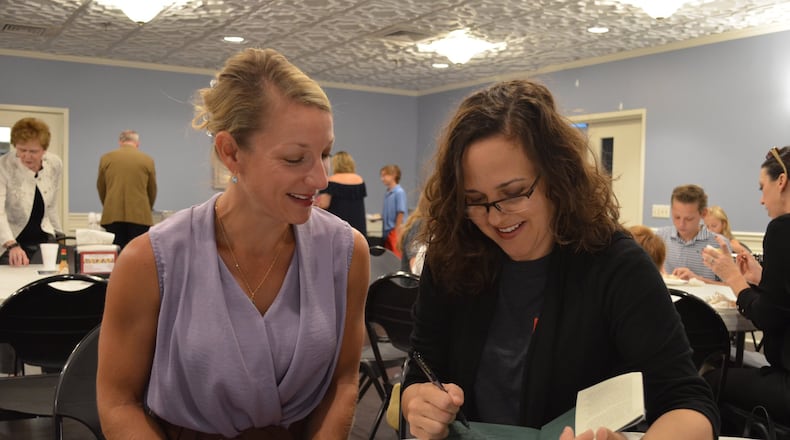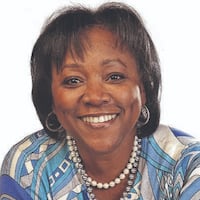Sometime in 2012, Sarah Stanley Fallaw and her father, Thomas J. Stanley, started talking about writing a follow-up to “The Millionaire Next Door,” the groundbreaking examination of wealth in America. They wanted to address any changes that might have taken place since the book was published, and possibly do an entirely new study looking at the life of millionaires.
Fallaw, by then, had earned a master’s degree in psychology and a doctorate in industrial psychology. Part of her work included measuring life experiences to determine what people’s future will look like.
“He was going to write the book, and I was going to gather the statistics,” she remembered recently.
Just weeks before Fallaw was about to begin that work in 2015, Stanley was killed in a car crash near his home in Marietta. He was 71.
Stanley was a marketing professor at Georgia State University, where he taught until 1989. That year, he transitioned into a consultant for financial institutions and writing books. His first three books were all geared toward financial planners, accountants, and individuals who were in the business of finding affluent populations.
“The Millionaire Next Door,” which he co-authored with University at Albany professor William D. Danko in 1996, was a compilation of his research studying the affluent for over 20 years. Stanley went on to write three more books, “The Millionaire Mind,” “Millionaire Women Next Door” and “Stop Acting Rich.”
>> RELATED: 'Millionaire Next Door' author dies in crash
“The Millionaire Next Door,” which stayed for more than 160 weeks on The New York Times best-seller list, shared with us the stories of ordinary people who had amassed extraordinary wealth.
According to Credit Suisse Research Institute’s latest Global Wealth Report, the number of millionaires worldwide is estimated to increase over the next five years, reaching an all-time high of 55 million. There are currently 42.2 million millionaires in the world. Within the past 12 months, the U.S. added 878,000 new millionaires — representing around 40 percent of the global increase.
You might not recognize most of them.
But what if they lived next door? What would they look like? What kind of car would they drive?
If “The Millionaire Next Door” taught us anything, it is this: The typical American millionaire doesn’t look anything like the advertising-driven image of one. Most are self-made, work hard at “dull, normal” jobs, are “compulsive” savers and investors and more often than not live next door to people with a fraction of their wealth.
There were plenty of people grateful for his work, his daughter said, but Stanley also had his critics who believed there was no way for people to become a millionaire on their own.
“In the aftermath, I was adamant about continuing his work, but I think that grief took over,” Fallaw said. “Even looking at the data would spawn memories of him.”
>> RELATED: 2 strangers come together to find the good in suffering
With her father’s help, Fallaw had already developed a list of questions they hoped the next book would tackle. Was it still the case that self-made millionaires are frugal? Did they still attribute their success to hard work and perseverance or something else? How did they make real estate decisions? How did they invest their money? And what mistakes did they make along the way?
Credit: The Atlanta Journal-Constitution
Credit: The Atlanta Journal-Constitution
Over the next four years following her father’s death, Fallaw worked to complete what she and her father had started.
“It took a while for the data to come in,” she said.
Meanwhile, Fallaw combed through her father’s old notes, trying to make sense of them. It was a tedious process, but last summer, she was finally able to finish the manuscript and turn it over to her husband, Tim, and mother, Janet, to edit.
“The Next Millionaire Next Door” hit store bookshelves last October.
And the findings?
It turns out that the mindset for amassing a million in 2019 isn’t all that different from doing it in 1996.
Whether talking about those in the mass market or those at the higher income levels, the wealthy ignore what other people are doing. In other words, they couldn’t care less about, well, keeping up with the Joneses. They put in the time planning their financial future. They live well below their means.
“The original findings weren’t just a fluke or the product of the boom time of the 1990s,” Fallaw said. “Building wealth, whatever that means for you, requires a certain pattern of behavior. Even if you have a small goal, the same pattern is required.”
In 1996, they might have been the small-business owner, a scrap metal dealer, or an auctioneer. Today, they might be the engineer who has several side businesses, or a sales professional who focuses on saving instead of spending. They drive 7- to 10-year-old cars. Some buy their kids neutral clothing so they can be passed down to siblings of either sex. They probably aren’t posting pictures on Facebook about the vacations they just had or the new purchase they just made.
Too often, Fallaw said, people confuse accumulating wealth and what they want out of life.
“The challenge is to really understand who you want to be,” she said. “Wealth may be a part of that because you need it to fund those goals, but the biggest change between 1996 and today is the pace of information and the lack of time we set aside to contemplate what we want. Because we don’t think about it, it’s easy to focus on consumption rather than asking ‘Am I becoming a better person or spouse or business owner?’”
So I asked her:
Should building wealth be our goal?
“I don’t think so, at least not your primary or predominant goal,” Fallaw said. “If you want to be secure in the future and want to have the flexibility to leave your job, start a business, or provide financial support for your children in the future, you do have to consider those things. But amassing piles of money as an all-encompassing goal would probably leave you pretty dull.”
Find Gracie on Facebook (www.facebook.com/graciestaplesajc/) and Twitter (@GStaples_AJC) or email her at gstaples@ajc.com.
About the Author
Keep Reading
The Latest
Featured





